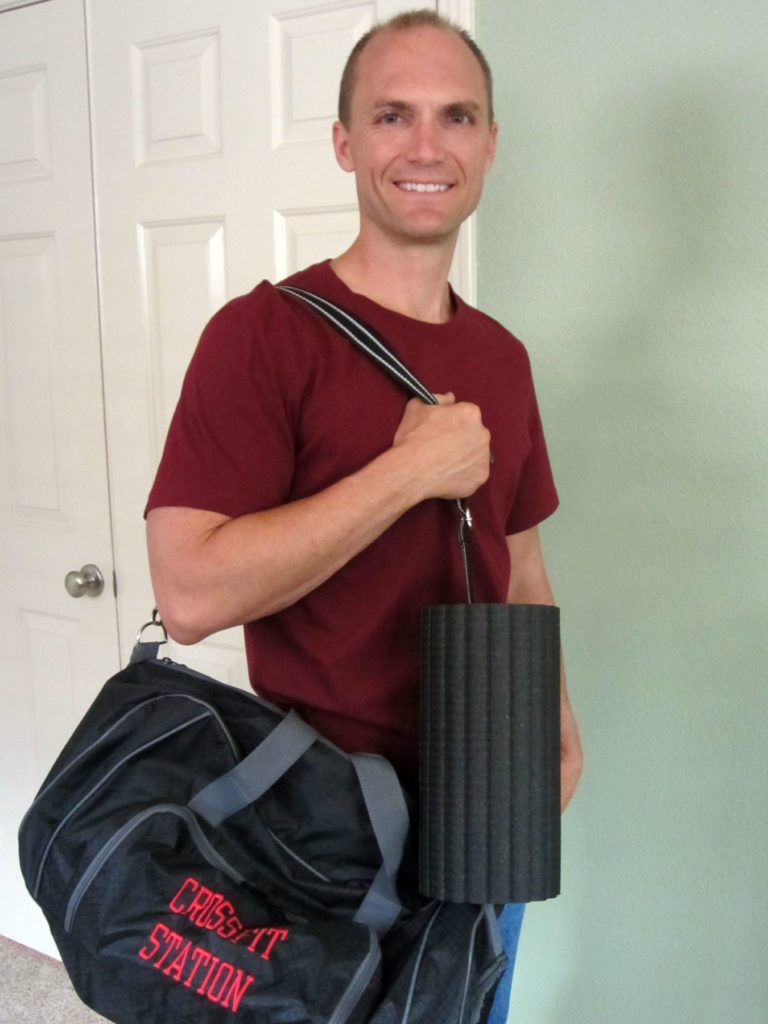From a personal and professional point of view, yes! I believe foam rolling works and can be a useful tool to reduce the risk of injury. From a research point of view, there are studies that confirm that foam rolling can reduce muscle soreness after exercise and improve range of motion (ROM). It may also improve recovery times by affecting how quickly a person recovers and performs one to three days post exercise session.
The actual mechanism of how and why foam rolling works is still under debate. Foam rolling is touted as being a self-myofascial release technique. Whether or not the fascia is actually being conclusively changed is still under investigation. What we do know is that the foam roller has positive effects on pain modulation, nervous system control over ROM, and affects blood flow. Foam rolling is generally not advised for anyone on blood thinning medications or with blood clotting disorders.
Foam rolling is one way to potentially improve fascial mobility. Fascia is a form of connective tissue that is integrated throughout the body like a spider’s web and is in and around all of the tissues. Injury, chronic poor posture, training and exercise, nutrition, health status, and even age will affect the health and mobility of the fascia. When fascia becomes restricted, adhesions form which cause soreness, restricted movement, gait change, and potential injury or illness.
Although research has not conclusively proven exactly how foam rolling affects the fascial system, it appears to have a positive effect by decreasing muscle and joint pain while increasing circulation and improving mobility, balance, and gait mechanics.
Range of Motion
Foam rolling likely has a positive effect on arterial stiffness and can improve arterial and vascular function while also positively affecting joint range of motion (ROM). The change in arterial and vascular function may in part be why foam rolling (after training) seems to have a positive effect in reducing muscle soreness.
Foam rolling also appears to have a beneficial effect on ROM, and more importantly, it can help improve ROM without negatively affecting performance. In contrast, static stretching has been shown to impede performance.
Aids in Recovery
Foam rolling may promote more blood flow to the area, which allows the body to eliminate waste more efficiently while providing much needed nutrients to aid in recovery. Improved recovery is important if you plan to participate in multiple events over multiple days such as a relay or weekend tournament. It may also allow for more intense and frequent training while reducing injury.
It may aid training during certain cycles when the intensity or volume may be higher or during an overreaching phase of training. Overreaching is typically a very short and deliberate phase in your training when you have a spike in training volume for a week or two followed by a return to baseline or below which can lead to improvements in performance. Care must be taken though because overreaching can easily turn into overtraining.
How to choose a foam roller:
Choosing the right size and density of foam roller is important. Research thus far concludes that a firmer high density foam roller has a more positive treatment effect than a softer version.
Depending on how you personally utilize the roller, the preferred length may vary. This is also true in regards to the texture on the foam roller. There are many styles of foam rollers to choose from which vary in texture and size. Each size has a slightly different purpose and use.

The BLACKROLL® FLOW is one of my favorite compact textured foam rollers. It’s the perfect size for travel or home use, and I can use it for nearly all of my favorite stretches and mobilizations. In addition, the texture is just the right amount without being too knobby or aggressive. I like how easily I can attach it to my work out bag for on the go use as well.
How to use the foam roller:
Foam rolling has many practical uses. It works best when used over larger muscle groups such as the legs. It’s my go to tool for addressing mobility issues throughout the thoracic spine. Individuals taking blood thinning medications or with blood clotting disorders should consult his/her physician prior to using a foam roller for mobilization.
- I typically recommend one to three minutes of body weight rolling (if it is tolerated) per extremity, and the same for the thoracic, low back, and buttock area.
- A good rule of thumb is to roll out an area that is tender and sore, or recently worked, until it no longer feels tight and sore.
- Again approximately one to three minutes per area although this may vary based on your size. Do not roll too quickly. Be careful to not over do. One to three minutes per area is typically optimal.
- In cases of painful areas and injured areas, it’s often more effective to roll out the adjacent and associated areas near the injury area while avoiding the most painful spots.
- Rather than constantly working directly on the area that causes pain, slowly foam roll your way away from the pain center to the connecting muscles.
- Increased time will be needed the more developed your muscles are.
- Be sure to roll the tissues in different positions and postures especially in more lengthened positions.
For more information on the use of a foam roller, please refer to Does Foam Rolling Help or Hurt Performance?
What has been your experience with using the foam roller? Is it worth the effort? Please share your comments or questions!
Join our growing community on Facebook by liking The Physical Therapy Advisor! If you have a question that you would like featured in an upcoming blog post, please e-mail contact@thephysicaltherapyadvisor.com.
